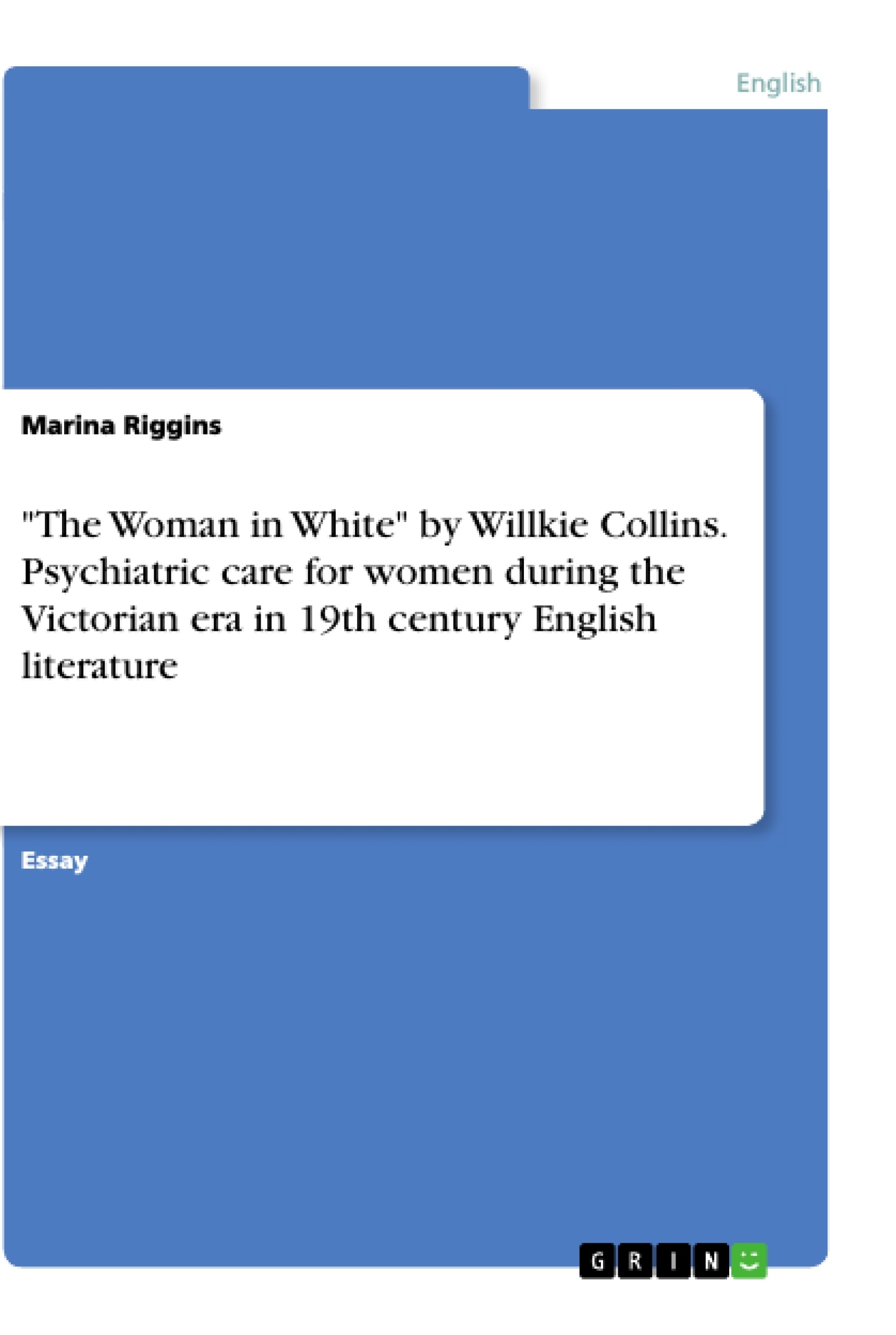This essay is about how the psychiatric care for women is represented in 19th century English literature, with focus on the novel “The Woman in White” (Willkie Collins).
In order to properly identify the problematic evolving around the psychiatric care for women during the 19th century England. It is very important to explore socio-political factors and the actual mind set of the people in the Victorian era, their morals and values. Furthermore, how these so-called asylums emerged in a greater scale. Psychiatric care for women, exercised in the lunatic asylums, was not medically based, but influenced by social norms and beliefs.
This matters also reflected in 19th century English literature. Themes involving the disposition of women in asylums were central to many of the sensational novels emerging during the 19th century. Among others Willkie Collins’ novel “The Woman in White” suggests another reason: thieving inheritance from women by abusing the lunacy law in England. The novel outlines very disturbing facts concerning the general treatment of women by society, where for a number of reasons, they could be easily disposed in asylums, labeled as mental patients.
Inhaltsverzeichnis (Table of Contents)
- Exploring Victorian Psychiatric Care for Women Through the Lens of Willkie Collins's The Woman in White
- Early Victorians and Bodily Perfection
- The Woman in White: A Victorian Asylum
- Asylums as Prisons
- The Lunatic Asylum as a Tool for Policing Women
Zielsetzung und Themenschwerpunkte (Objectives and Key Themes)
This essay examines the evolution of psychiatric care for women in 19th century England through the lens of Willkie Collins's novel The Woman in White. It investigates the socio-political factors and societal norms that shaped these institutions, highlighting the abuse of the lunacy law and the societal oppression of women.
- Victorian society's obsession with bodily perfection and its impact on the treatment of disabled individuals
- The use of asylums as prisons to control and confine those who didn't conform to Victorian social norms
- The abuse of the lunacy law to silence women and steal their inheritances
- The role of "moral treatment" in the Victorian asylum and its impact on women
- The social oppression and treatment of women in Victorian England
Zusammenfassung der Kapitel (Chapter Summaries)
- The essay begins by exploring the Victorian fascination with bodily perfection and how it led to the demonization and mistreatment of disabled individuals. It explores the historical context of asylums as places to confine those who didn't conform to societal norms, particularly women who challenged traditional gender roles.
- The second section examines the treatment of women within the Victorian asylum system, focusing on how the lunacy law was abused to silence women and deprive them of their inheritances. The novel The Woman in White is used as an example, demonstrating the ways in which women were subjected to social oppression and mistreatment within these institutions.
- This chapter delves into the dark realities of Victorian asylums, highlighting the lack of medical understanding and the use of cruel "moral treatment" methods, which were often imposed through techniques of surveillance and control.
- The essay explores the ways in which asylums operated as prisons, serving to confine unwanted individuals and generate revenue. It discusses the brutal experiments and falsified medical records that were common practices in these institutions.
- The final chapter focuses on the experiences of women confined in Victorian asylums, drawing on research from letters written by patients who were released. It paints a chilling picture of these institutions as places of torture, where women were subjected to brutal treatment and manipulation.
Schlüsselwörter (Keywords)
The key themes and concepts explored in this essay include Victorian society, psychiatric care, women's rights, the lunacy law, moral treatment, asylums, societal oppression, The Woman in White, and the social and historical context of 19th century England.
- Quote paper
- Marina Riggins (Author), 2019, "The Woman in White" by Willkie Collins. Psychiatric care for women during the Victorian era in 19th century English literature, Munich, GRIN Verlag, https://www.grin.com/document/539363



